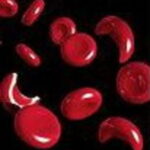Low iron stores and iron deficiency anemia are a common problem – particularly among pre-menopausal women who lose iron regularly through menstrual bleeding. Low iron levels are much less common in healthy men and post-menopausal women. In fact, when low iron levels are found in men and older women, it’s important know why since it can be a sign of microscopic bleeding. Groups of people at higher risk of developing symptoms of low iron include vegetarians, pregnant women, infants, people with kidney disease, and those who have digestive problems that cause reduced iron absorption. When iron stores become very low, iron deficiency anemia develops, but even in the absence of anemia, some people with low iron levels experience symptoms. What are the symptoms of low iron and iron deficiency anemia?
Symptoms of Low Iron Levels
The most common symptoms of low iron and iron deficiency anemia are fatigue and loss of energy. Most people with iron deficiency anemia and low iron stores complain of feeling tired. They may wake up refreshed in the morning, but as the day goes on they gradually peter out and may feel completely exhausted by the end of the day. Because iron is important for manufacturing hemoglobin that carries oxygen to the brain, some people feel foggy and unable to think. Children with low iron stores may have problems with learning and maintaining focus. When iron deficiency is severe, dizziness and lightheadedness can occur along with feeling constantly cold. People with low iron stores may be more susceptible to infection and sometimes develop painful cracking at the corners of their mouth – a condition known as cheilosis.
Symptoms of Low Iron: The Importance of Lab Studies
Because the symptoms of low iron are so non-specific, it’s important to be sure your iron stores are actually low before taking iron supplements. Iron supplements should never be taken in the absence of a deficiency since iron is a pro-oxidant and too much of it may increase the risk of cancer and heart disease. The best way to check for low iron stores and iron deficiency anemia is to have your doctor check a complete blood count and an iron panel. The iron panel includes a ferritin level, a measure of how much iron you have stored in your body.
Treatment of Low Iron and Iron Deficiency Anemia
If you have symptoms of low iron and documented iron deficiency, your doctor may suggest that you take an iron supplement for six months or more to replenish iron stores. If you’re a man or a woman past the age of menopause, make sure your doctor determines why your iron stores are low. The most common reason is microscopic bleeding from the digestive tract which can be due to colon polyps or tumors, peptic ulcers, or other digestive tract diseases. Treating the underlying cause of the low iron should be a priority – for obvious reasons.
References:
Cecil’s Essentials of Medicine. Sixth Edition.


